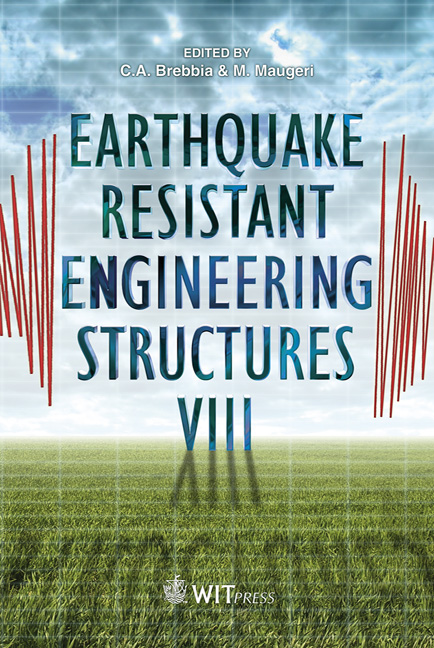Seismic Action To Withstand The Structures: The Case History Of 2009 Abruzzo Earthquake
Price
Free (open access)
Transaction
Volume
120
Pages
12
Page Range
3 - 14
Published
2011
Size
1,708 kb
Paper DOI
10.2495/ERES110011
Copyright
WIT Press
Author(s)
M. Maugeri, G. Totani, P. Monaco & S. Grasso
Abstract
The evaluation of the seismic action which the structures must withstand is the most critical item of the full process of analysis, monitoring and mitigation of seismic risk. Seismic action has been recorded worldwide for moderate to severe earthquakes. In the last 30 years the recorded accelerations have significantly increased. One reason could be due to the increasing number of recorded stations and to the location of a considerable amount of recorded stations on soft soil, where significant site amplification can occur. By the way the recorded accelerations have exceeded the designed acceleration given by seismic codes. That particularly occurs in the case of strong earthquakes, where the evaluation of seismic action given by source mechanism gives, in some cases, a seismic design earthquake greater than that given by the probabilistic evaluation reported by the codes. Also in the case of the moderate ML = 5.8 Abruzzo earthquake, the recorded acceleration exceeded the provisions given by Italian Code. Mainly two factors could explain that. One factor is related to the different results obtained by the probabilistic evaluation of seismic action given by the codes and the deterministic seismic action evaluated by source modelling of the scenario earthquake. The second factor is related to the role of site amplification, which is higher for small to moderate earthquakes and lower for severe scenario earthquakes. These two factors are discussed for the case of the Abruzzo 2009 earthquake, where, because of the normal fault mechanism, severe vertical components of the acceleration were recorded; also significant site effects occurred, particularly in the Aterno valley.
Keywords





